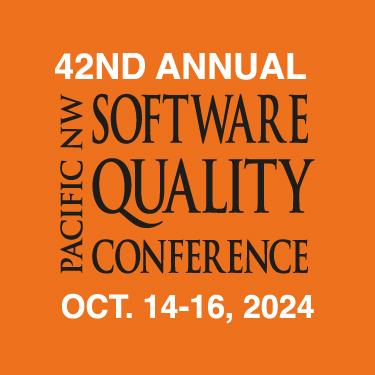Philip Lew
PNSQC Author Guidelines
Authors and their dedicated efforts to producing high-quality papers and presentations are the keys to ensuring a high-quality conference. PNSQC would like to take this opportunity to thank all authors for their participation. We hope you find this PNSQC Author Guidance document useful during your paper preparation. Writing a PNSQC conference paper, presentation, poster, tutorial, or workshop is not trivial. PNSQC deeply appreciates your efforts. With this said, we believe that while Generative AI can aid you in writing your paper, we don't expect it to write your paper for you. Our GenAI policy outlines our position and this is especially critical since your paper will be published in our annual proceedings and we must comply with Amazon's publishing rules. Notwithstanding, the guidelines below may be viewed as having subjective aspects, and you may have a different opinion on specifics. You and your Reviewers would ultimately need to apply judgment in producing a high-quality paper accepted for publication in the PNSQC proceedings.
-
Title. The title should be short, memorable, and to the point. PNSQC recommends titles that are fewer than 10 words, with a subtitle explanation if necessary.
-
Overall Coherence. Your paper should flow from one section to the next so the reader can understand from beginning to end. Make sure your paper follows a logical ordering such as; cause and effect, time sequence, or other logical order. Tell the reader what your ordering is upfront so they know what to expect as they read.
-
Use of Examples. Authors should give examples of concepts that they introduce to maximize the benefit of knowledge transferred. Use examples to make concrete the point you are trying to make.
-
Use of Data. Real data should be provided on experiments you have done to support your proposition or assertions made based on observations – whether the observations come from the author or a third party. Make sure you use data or references to relevant data to support your argument based on a trend or related evidence.
-
Use of Graphs or Graphics. Graphs and drawings can be recommended where appropriate to make the paper more clear and more understandable to the reader. As an author, ensure that it is easy to visualize the trend or pattern that you are describing; please consider using a graph or appropriate graphics to make it easy for the reader to grasp your ideas.
-
Clear Introduction and Conclusion. Papers should have a clear introduction and conclusion that ties to the introduction and abstract while stating clearly what the reader should remember the most about the paper, and where they can apply it in their professional work.
-
Use of References. Papers should reference other similar works, tools, or authors that have discussed or worked on things that are similar but different. Also, relative to references cited, an author should say where the item under review is different, better, or for a different application of a similar theory or concept.
-
Use of Previous Work. As an author, you are allowed to cite your own work, and use your own work for the current effort, however, there should be substantial differences between your past works, and the current work for PNSQC. A general guideline is that the current work should have at least ⅓ of new content from any previous work.
-
Grammar and Spelling. Sentences should be grammatically correct, poor spelling, run-on sentences, and other writing defects should be corrected by you, the author, and not need to be pointed out or corrected by the reviewer. Use a third-party tool to make corrections and support you.
